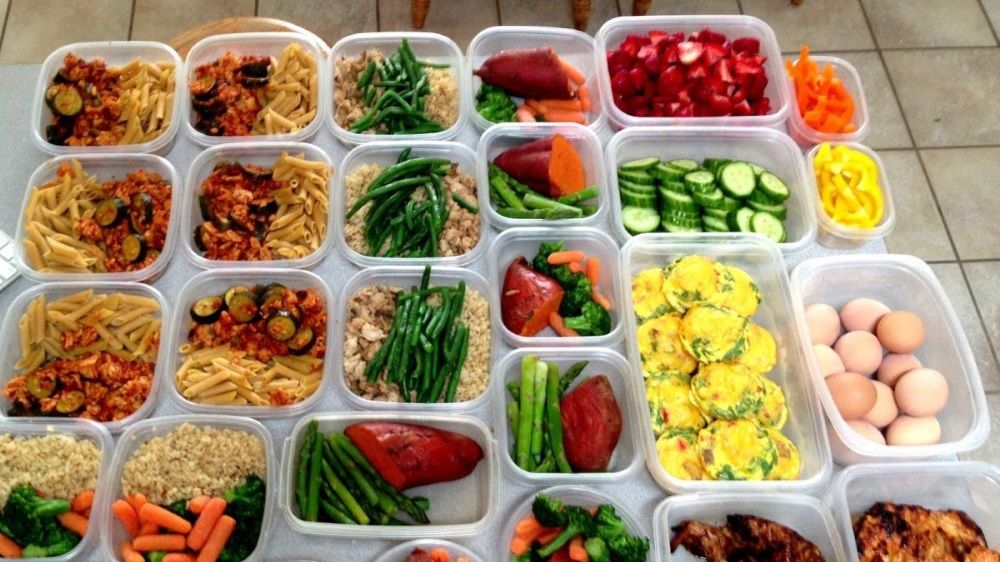Most of the modern diets used in bodybuildingare not quite correct. This is due to the desire of each author to invent something new when creating their own diet, but in 99% of cases these innovations are completely absurd, and sometimes even harmful. Sophisticated cycling techniques, a preference for certain specific foods, difficulty in preparing products, ridiculous combinations — all these are attempts to bring something new to bodybuilding dietetics that attracts attention. If you are advised to eat horseradish with garlic, or use only a narrow range of products for example, vegetables that have a purple color, etc., you can safely close this book or article.
Who does this diet suit?
This publication was prepared by SportWiki experts on the basis of up-to-date data from dietetics and bodybuilding, as well as rich successful experience in applying it in practice. Here is not even a description of a particular scheme, but a compilation of effective principles of nutrition for a bodybuilder, regardless of the level of his professionalism and the state of muscle mass, which will allow you to understand the features of nutrition and make your own diet, with which you can strengthen your health and achieve maximum results in bodybuilding.
The diet described in this article can be followed for an unlimited period of time, and does not have certain features of “entering” and “exiting” it. Remember that you need to increase and decrease the amount of food consumed (calories and volume) gradually, otherwise metabolic disorders and digestive disordersmay occur . The body needs time to adapt to new dietary patterns.
Basic principles of the diet
1. 5-6 meals a day
Recent research they showed that the anabolic effect of food intake lasts approximately 3-4 hours, despite the fact that high levels of amino acids last longer. Therefore, when gaining muscle mass, you need to eat quite often: the optimal number of meals is 5-6 times a day. At this frequency, the digestive system is not overloaded, and small portions of nutrients are constantly entering the bloodstream, which will nourish your muscles throughout the day. If you eat the same amount of food in 3 meals, then the absorbed nutrients will come in excess, so the body will begin to deposit them in the form of fat, from where it is not possible to extract them in a high-calorie diet.
2. High-calorie food
About 70% of the food consumed should be high-calorie, otherwise there is an overload of the digestive system, and the degree of absorption of nutrients decreases. No one denies the usefulness of fruits and vegetables, but when gaining muscle mass, their mass fraction should not exceed 30%. Fiber, which is contained in them in large quantities, is not digested and stimulates intestinal contraction, so most of the high-calorie food will not have time to digest.
3. Limit fat and fast carbs
Try to limit your intake of foods rich in animals and other saturated fats (fatty meat, lard, margarine, butter, sausages, etc.). For muscle growth and energy production, the body primarily uses carbohydrates, so most of the fat in conditions of excess nutrients will be deposited in adipocytes (fat cells).
Avoid consuming fast carbohydrates. The most dangerous ones are sweets (confectionery, sweet fruits, etc.), and less dangerous ones are baked goods. Fast carbohydrates can be absorbed very quickly from the digestive tract, resulting in a sharp increase in blood sugar levels, in response to this, the body converts glucose into fat.
Fast carbohydrates can be consumed after training, when the muscles and other organs are able to quickly utilize glucose, and the secretion of the anabolic hormone insulin increases, which is important for gaining muscle mass.
4. Drinking regime
When gaining muscle mass, many metabolic reactions are intensified, which creates the need for more water consumption. The optimal amount of liquid on average (including water contained in products) is 3-4 liters per day. Avoid developing dehydration( dehydration), and always drink when you are thirsty.
5. Distribution of servings throughout the day.
When gaining muscle mass, the amount of food should be approximately equal, but in the first half of the day (before 16:00), about 70% of all food eaten during the day should be eaten. Although recent studies have shown that the daily portion distribution plays a secondary role.
Never eat anything sweet or greasy at night. Food before going to bed should be easily digestible and rich in protein.For this purpose, sour-milk products, vegetables (legumes and others), poultry meat, salads, eggs, fish are well suited.
Pre-workout nutrition. Be sure to eat before your workout (2 hours before it starts). For this purpose, protein dishes and products containing slow carbohydrates are well suited: cereals, flour, vegetables, etc. Pre-workout carbohydrates are essential to load up your glycogen stores and provide your muscles and brain with energy during training. Amino acids will allow you to start anabolism.
Nutrition after a workout. The greatest need for nutrients is observed in the near future after training. It is optimal to use a carbohydrate-protein shake (gainer) immediately after the end of training, followed by a large meal no later than 1-1. 5 hours after training. Include in it foods rich in protein and slow carbohydrates, you can even eat a small amount of fast carbohydrates (sweet). After the training, the so-called protein-carbohydrate window opens during this time, the body is positioned to absorb a large amount of food, while nutrients are used to restore muscle and replenish energy.
Food Pyramid
6. Proportions of protein, fat, and carbohydrates (in kcal))
- Carbohydrate content — 50-60%
Try to consume only slow carbohydrates.
- Protein content — 30-35%
These are essential nutrients for your muscles. Ideally, 50% of protein is obtained from foods, the rest from sports nutrition. It is recommended to calculate the protein requirement using a calculator based on body weight, physical activity, and other factors.
- Fat content — 10-20%
Do not limit the amount of fat below 10%, this will cause unwanted metabolic changes. Try to consume only vegetable fats. Eat oily fish without restriction. Fish oil is very healthy.
It should be remembered that there is no ideal ratio that would suit absolutely everyone. Therefore, the main task of a novice bodybuilder is to find your own, which will be effective for you personally. Here we present average numbers that are suitable for most people, you should start with this, and you can experiment with it. Interestingly, the ratio of protein, fat and carbohydrates is not much different from the recommendations of nutritionists for ordinary people, and this is not surprising, since such proportions are best suited for both an ordinary person and an athlete.
The main principle of gaining muscle mass
Muscle mass begins to grow only when the amount of energy received in the form of food exceeds the amount of energy consumed by the body. In addition, you need to remember that the body always tries to maintain homeostasis (constancy of the internal environment), so you can increase the caloric content of the diet by 5, 10 and even 30%, while the mass will not change! Sometimes, to move the mass from the “dead center”, you need to increase the caloric content of the daily diet by 50 and even 100%!
To determine the amount of food you need to gain muscle mass, you need to follow a simple method:
To do this, you need to weigh yourself at least once every three days. After a month, you will be able to adjust your rate. Do not exceed the amount of weight gain of more than 800 g per week, otherwise your body will start to store a lot of fat!
Fat control
Regularly monitor your body fat percentage. According to a 2015 study on 58 pairs of twins, the active formation of dangerous visceral fat in men occurs when they reach 20.6% of the total body fat, and in women when they reach 39.4%. Therefore, when accumulating 15-20% of fat in men, it is necessary to stop weight gain and switch to a relief diet with a gradual decrease in fat levels to 10%, and then you can start a new cycle of weight gain.


